- Details
- Written by: Kamran Mofid
- Hits: 2208
First published in 2018
William Morris: The Man for the Common Good
‘In his designs, William Morris combined his two greatest passions:
the wonder of nature and a socialist belief that everyone should have access to art and beauty.’- The Guardian
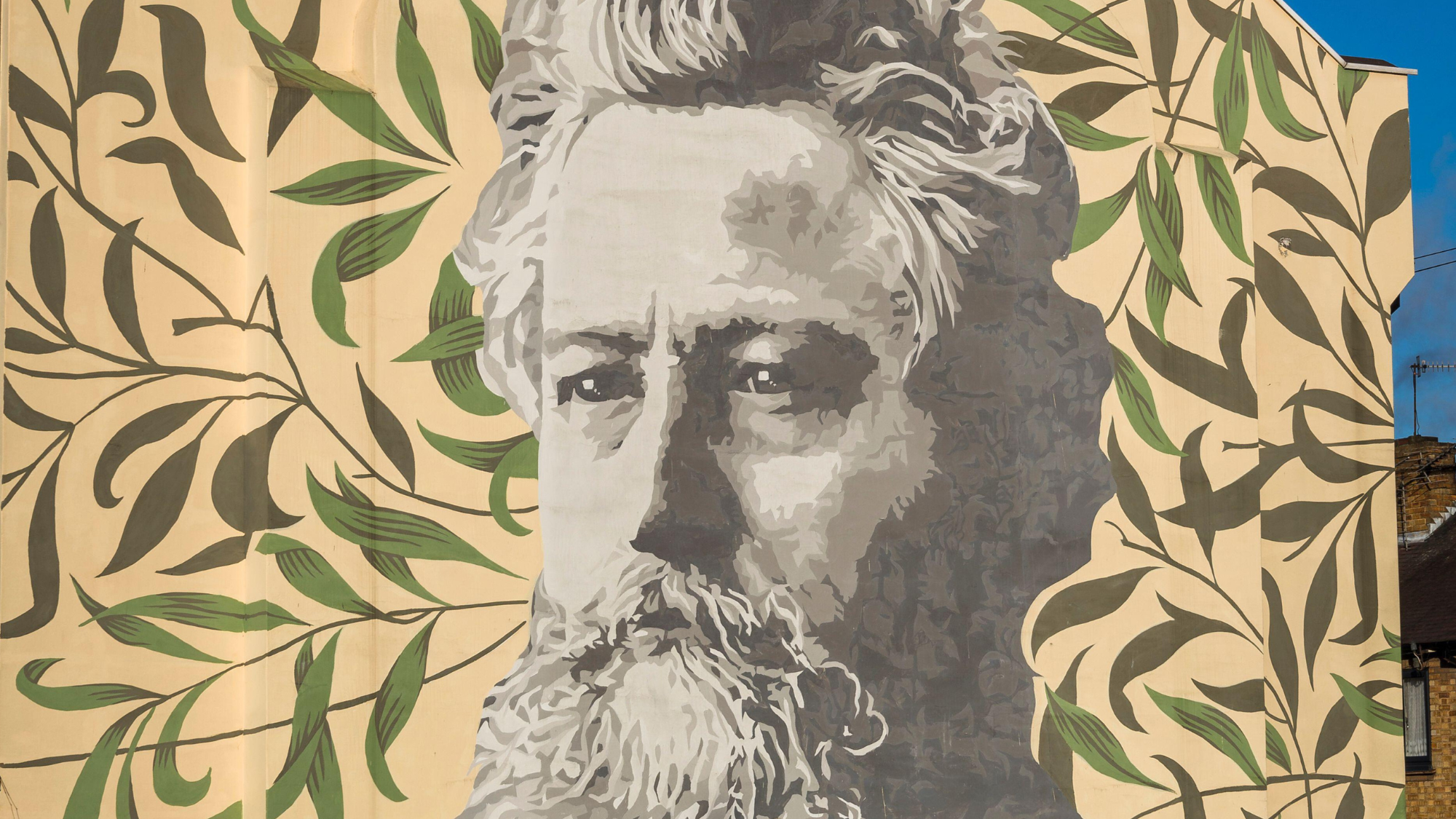
A mural depicting William Morris, near the museum in Walthamstow that is devoted to him by Christopher Everard.
William Morris is a Prophet of our Time
A Reflection on William Morris’ Message of Hope and Urgency
At the time when there is a full-frontal assault on beauty,dignity, simplicity, arts and crafts, truth and justice, contentment and inner peace, when those with the lowest moral compass are chosen to be ‘leaders’, when plundering, exploitation, devaluation and denigration of Mother Nature and the destruction of our Mother Earth is celebrated and seemingly rewarded, all to satisfy the lust for money, I want to share a personal and rewarding story of healing with you, an inspiring journey of self-discovery, seeing life differently to what is promoted by the "Moneyed men" social media barons and their likes. We must never forget that, at a time when everything is becoming more digitalised, soul-less and meaningless, it’s fundamentally vital and significant to remember that arts and crafts matter, beauty and dignity matter, handmade things matter, sustainability matter, and campaigning, activism, championing beauty matter.
‘He towers greater and greater above the horizon beneath which his best advertised contemporaries have disappeared.’-George Bernard Shaw
‘a master of all exquisite design and of all spiritual vision’-Oscar Wilde
William Morris and His Legacy: The Virtues of Simplicity and Valuing Beauty
N.B. This journey of discovery is in two parts. Part I, begins on a beautiful, warm and sunny day in 2016 when I visited the William Morris Gallery in Walthemastow, London. Part II is when I revisited the Gallery on a beautiful winter day on 19 January 2025.
Part I- Visiting William Morris Gallery 2016 
Image credit:Laura's Beau
I have learned that simplicity, contentment, appreciating beauty, and thriving for sustainability should be my path to a rewarding and meaningful life

Wandle by William Morris, 1884
As the complexity of my life grew, I discovered a gem: The key to Happiness is a simpler living, when life becomes all about finding joys in the simple pleasures of life, being content with solitude, quiet, contemplation, the awe of the daily sunrise and sunset, savouring the moment, the centrality of family and friends, the anchors that have kept me afloat in often stormy and challenging seas.
The wisdom and the healing power of simplicity
The day I discovered the wisdom of William Morris

“So long as the system of competition in the production and exchange of the means of life goes on, the degradation of the arts will go on; and if that system is to last for ever, then art is doomed, and will surely die; that is to say, civilization will die.” — William Morris. Photo credit: Via Medium
‘This overwhelming giant of unsurpassed vitality, who encompassed many lives and produced in his own short span more than a dozen ordinary men, is a supreme example for us today. What he strove for, his unswerving pursuit of excellence, the standards he lived by, and above all his vision of the good life we could all have if we cared passionately enough to achieve it, make him tremendously relevant to us today. He is one of those few men whom history will never overtake!’- Robin Tanner, in perhaps one of the best articles I have read on William Morris
‘Science has in these latter days made such stupendous strides, and is attended by such a crowd of votaries ... that she seems to need no more than a little humility to temper the insolence of her triumph, which has taught us everything except how to be happy. Man has gained mechanical victory over Nature, which in time to come he may be able to enjoy, instead of starving amidst of it ... it may well be that the human race will never cease striving to solve the problem of the reason for its own existence; yet it seems to me that it may do this in a calmer mood when it has not to ask the question, Why were we born to be so miserable? but rather, Why were we born to be so happy?’- William Morris
Nota bene
I had heard about William Morris, but I knew next to nothing about who he was. I can vaguely remember years and years ago visiting an old house in Coventry. I commented on an old-looking, but amazingly beautiful wallpaper in the hall and the landing. Our guide told me it was by William Morris, the Arts & Crafts Movement, you know! That was it!
Then, in 2016, our oldest Son, Kevin, and his partner, Sarah, who were working in London, bought a house in Walthamstow, E17. Over the years we visited them many times, and each time we got to know and enjoy the area more.
One occasion stands out very clearly in my mind, when we walked from their house to William Morris Gallery, a short 15-20 minute walk from the centre of Walthamstow. It was a beautiful spring day, a day we remember fondly.

At the entrance to William Morris Gallery, 2016. Photo by Anne Mofid
My wife and I had an amazing day, a guided tour, discovering pearls of wisdom, gems of beauty and more, as we went from floor to floor and room to room. Anyhow, to cut a long story short, we went to the Gallery and the beautiful gardens a couple of more times, whilst all the time I was reading and learning more about William Morris, influencing my thoughts and my vision for an educational tradition that emphasises ideas of “virtue” and “the good life”, beauty, wisdom and goodness, durability and sustainability.
The beauty of living simply: the forgotten wisdom of William Morris
William Morris: Walthamstow’s Gift to the World
William Morris, born on 24 March 1834 at Elm House, Walthamstow, East London, was a revolutionary force in Victorian Britain: Known for his fantastic floral prints, William Morris designed tapestries, wallpaper, fabrics and furniture during the latter part of the 19th century. He was also a celebrated artist, poet, writer and social activist. His genius was so many-sided and so profound that its full extent has rarely been grasped. Many people may find it hard to believe that the greatest English designer of his time, possibly of all time, could also be internationally renowned as a founder of the socialist movement, and could have been ranked as a poet together with Tennyson and Browning. His designs are still widely used today and so are many of his ideas and principles. Morris has enabled us to dare to imagine and envision a more beautiful world. Throughout his life he laboured through his creative endeavours to beautify the earth and the lives of those who dwell upon it. Long may it be so.
‘Simplicity of life, even the barest, is not a misery, but the very foundation of refinement: a sanded floor and whitewashed walls, and the green trees, and flowery meads, and living waters outside; or a grimy palace amid the smoke with a regiment of housemaids always working to smear the dirt together so that it may be unnoticed; which, think you, is the most refined, the most fit for a gentleman of those two dwellings…?
‘And then from the simplicity of life would rise up the longing for beauty, which cannot yet be dead in men’s souls, and we know that nothing can satisfy that demand but intelligent work rising gradually into imaginative work; which will turn all “operatives” into workmen, into artists, into men.’—William Morris
William Morris: A Man for All Times
Simple Life, is a Good Life
Why a Simple Life Matters: The Path to peace and happiness lies in the simple things in life
As many sages and philosophers of love and beauty have reminded us ‘much of our suffering comes from adding unnecessary and disturbing complications in our lives. We seem to be continually weaving elaborate conceptual webs around even straightforward events. We distort reality and shroud it with complications by superimposing fabricated mental constructs. This distortion invariably leads to mental states and behaviours that undermine our inner peace and that of others.
‘How many human enterprises and noble causes have failed due to unnecessary complications. We need to simplify our thoughts, simplify our words, and simplify our actions. We need to avoid falling into circular mental rumination, pointless chatter, and vain activities that waste our precious time and engender all kinds of dysfunctional situations.
‘Having a simple mind is not the same as being simple-minded. Simplicity of mind is reflected in lucidity, inner strength, buoyancy, and a healthy contentment that withstands the tribulations of life with a light heart. Simplicity reveals the nature of the mind behind the veil of restless thoughts. It reduces the exacerbated feeling of self-importance and opens our heart to genuine altruism.’-Matthieu Ricard
William Morris: A Life for Our Time
THE ARTS & CRAFT MOVEMENT: The Slow Pursuit of a Slower and Simpler Life
‘All art starts from this simplicity; and the higher the art rises, the greater the simplicity.’
William Morris and His Legacy: The Virtues of Simplicity and Valuing Beauty
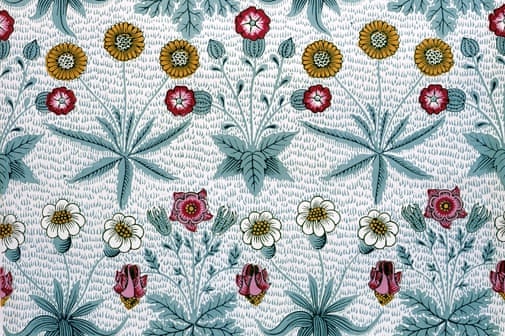
Daisy wallpaper, 1862 designed by Morris. Photograph: © William Morris Gallery, London Borough of Waltham Forest
The Beauty of Simplicity — Living a Simpler Life, William Morris’s golden rule for a good and worthwhile life, his words and sentiments resonate with me. Why, you may ask? To answer this question, I need to go back in time, when, over twenty five years or so ago, I faced, possibly, the biggest challenge to my way of life. It could have been very disastrous. But now looking back, one consequence of that very sad time, was the fact that ‘Simplicity’, ‘Living Simply’ which was forced on me, has turned out to be the biggest gift I could have ever had.
Continue to read and discover more: The beauty of living simply: the forgotten wisdom of William Morris
Morris’ influence on me has been positive and great, rewarding and nourishing. Below I have noted a few examples of my postings, old and new:
World in Chaos and Despair: The Healing Power of the Simple Things in Life
Simpler life and simpler times: A Journey in Life
In these troubled times let us be ordinary and enjoy the simple pleasures of life
In Praise of Frugality: Materialism is a Killer
The secret to happiness? Contentment!
......
Part II- Visiting William Morris Gallery, 19 January 2025
Standing at the entrance to the Gallery, 19 January 2025.
William Morris & Art From The Islamic World
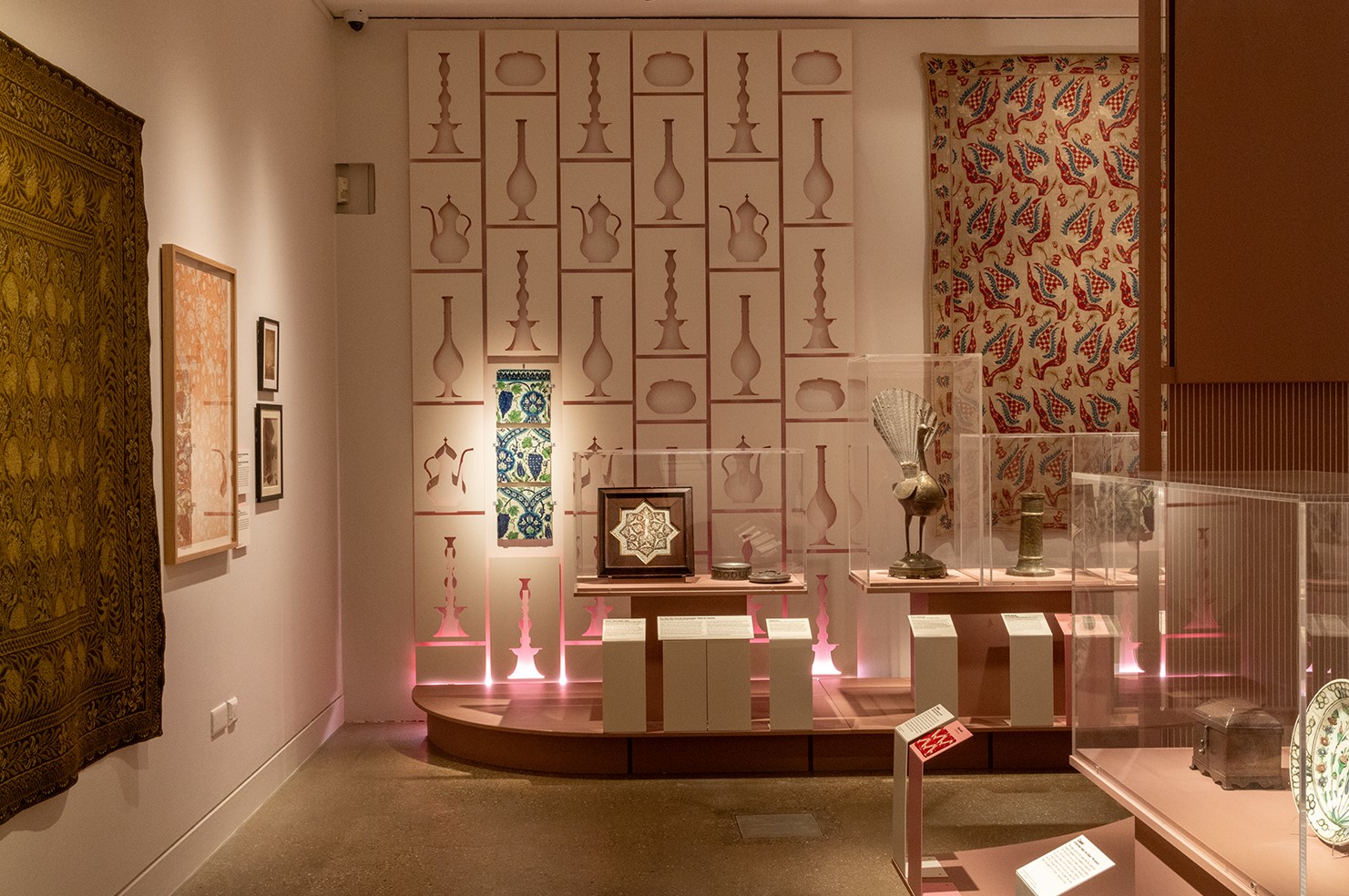
Images:
Peacock, c.1870, Iran, hollow brass with pierced decoration and turquoise. © The Society of Antiquaries of London (Kelmscott Manor)
Wild Tulip, 1884, designed by William Morris for Morris & Co., block-printed wallpaper. © William Morris Gallery
‘The first exhibition to explore the influence of art from the Islamic world on William Morris, one of Britain’s most important nineteenth century designers and thinkers.
A principal founder of the Arts and Crafts Movement, William Morris was responsible for producing hundreds of patterns for wallpapers, furnishing fabrics, carpets and embroideries, helping to introduce a new aesthetic into British interiors. While it has long been acknowledged that Morris was inspired by Islamic art, this is the first exhibition to examine this important aspect of his artistic journey in depth.
Alongside his own iconic designs, outstanding examples of Islamic textiles, ceramics, metalwork and manuscripts from Morris’s personal collection – now belonging to major UK institutions including the British Library, Birmingham Museum and Art Gallery and the Fitzwilliam Museum, Cambridge – are brought together for the first time to reveal the wider impacts of these objects, their designs and impressions on Morris’s creative output.
The umbrella terms “Islamic world” and “Islamic art” are widely used to facilitate the categorisation of art produced in areas where Islam was the dominant religion or the religion of those who ruled. However, they perpetuate the notion that there is a single identity or uniformity within the vast output of production from across huge geographical regions. These ideas will be explored and discussed further in the exhibition and public programme.
Featuring over 90 works, the exhibition demonstrates how some of Morris’s best-known designs such as Flower Garden (1879), Wild Tulip and Granada (1884) were directly inspired by Islamic surface design and its technical application. This exhibition sets out to enrich our appreciation of Morris’s work and broaden our understanding of the underlying influences of this quintessentially British designer. The exhibition is made possible thanks to funding from The National Lottery Heritage Fund and the Garfield Weston Foundation.’-William Morris Gallery
On the day of my visit to the gallery, I took many photos. For a selection of the pictures I took pldease see HERE
For more published online photos see HERE
** The exhibition is accompanied by a new publication, Tulips and Peacocks: William Morris and Art from the Islamic World (Yale University Press).
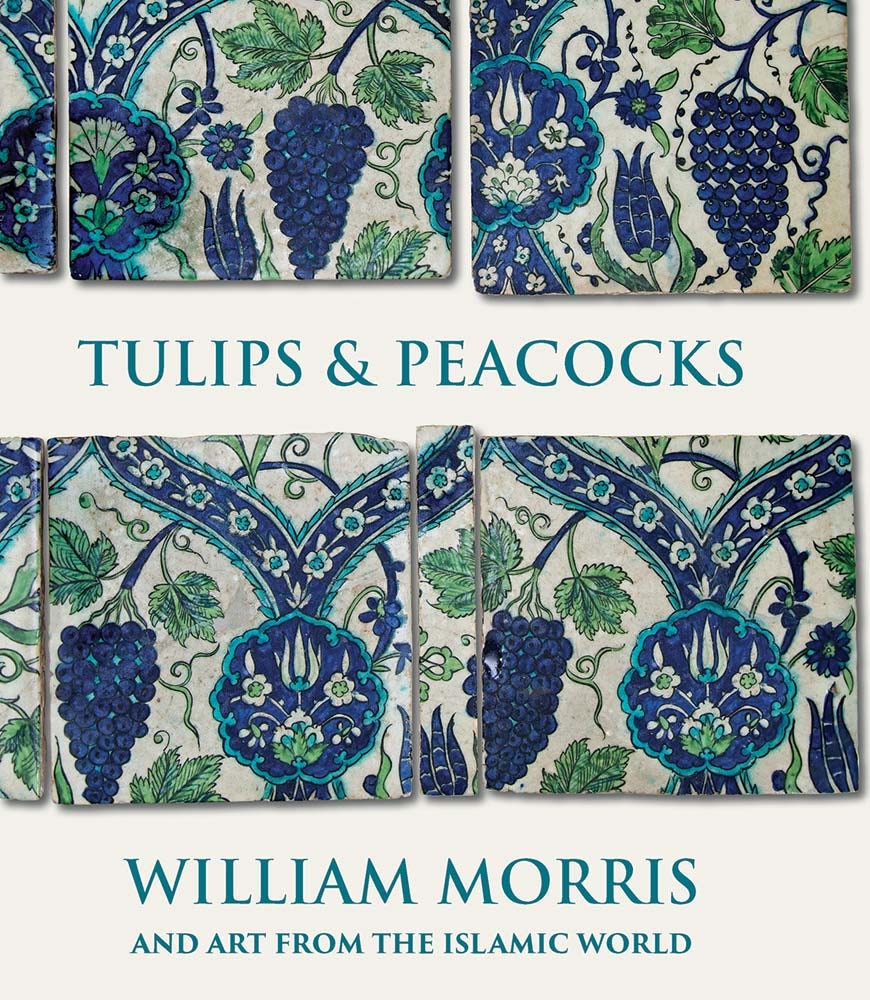
‘An introduction to William Morris’s personal collection of artworks from the Islamic world and how they came to influence his pattern-making One of the principal founders of the Arts and Crafts movement, William Morris was responsible for hundreds of patterns for wallpapers, fabrics, tapestries, and carpets that are iconic of the late nineteenth century and continue to resonate today. It is now widely acknowledged that his artistic production was stimulated by his deep familiarity with embroideries, woven velvets, silks, carpets, and metalwork from Iran, Syria, and Turkey, which he collected throughout his lifetime. Ranging from popular nineteenth-century tourist merchandise to rare artefacts of historical significance, Morris’s collection is a testament to the interconnectedness of global artistic traditions and the enduring importance of recognising the contributions of various cultures to the evolution of his design and craftsmanship. This highly illustrated publication offers diverse perspectives in contextualising Morris’s role within contemporary debates around colonial collecting, Islam’s representation in the museum context, and issues of cultural appropriation from contributors within the field of British Arts and Crafts and Art from the Islamic world.’
Buy the book HERE
A Simple Manifesto for a Simpler Life: Why Simple Life Matters
‘We live in a time when many people experience their lives as empty and lacking in fulfillment. The decline of religion and the collapse of communism have left but the ideology of the free market whose only message is: consume, and work hard so you can earn money to consume more. Yet even those who do reasonably well in this race for material goods do not find that they are satisfied with their way of life. We now have good scientific evidence for what philosophers have said throughout the ages: once we have enough to satisfy our basic needs, gaining more wealth does not bring us more happiness.’- Peter Singer
Simple Living Promotes Virtue, Which Promotes Happiness
Simple Living is Guided by Economic Prudence, ‘Waste not, Want not.’
Simple Living Allows One to Work in order to Satisfy the Basic Needs and Thus, Enjoy More of life’s Experiences which Suffices for Happiness
Simple Living Promotes Serenity Through Detachment
Living Frugally Prepares One for Tough Times
Simple Living Enhances One’s Capacity for True Pleasures of Life, When Less is More!
Frugality Fosters Self-Sufficiency and Independence
Simple Living Keeps One Close to Nature and the Natural, when one is Guided and Inspired by the Wisest Teacher: The Mother Nature
Simple Living Promotes Good Health and Spiritual Purity
Simple Living Allows us to Speak of Global Responsibility and a Global Community. It Encourages us to Take Action in the Interest of the Common Good.
Journey to Healing: Let Me Know What is Essential
GCGI is our journey of hope and the sweet fruit of a labour of love. It is free to access, and it is ad-free too. We spend hundreds of hours, volunteering our labour and time, spreading the word about what is good and what matters most. If you think that's a worthy mission, as we do—one with powerful leverage to make the world a better place—then, please consider offering your moral and spiritual support by joining our circle of friends, spreading the word about the GCGI and forwarding the website to all those who may be interested.

Image credit: Laura's Beau
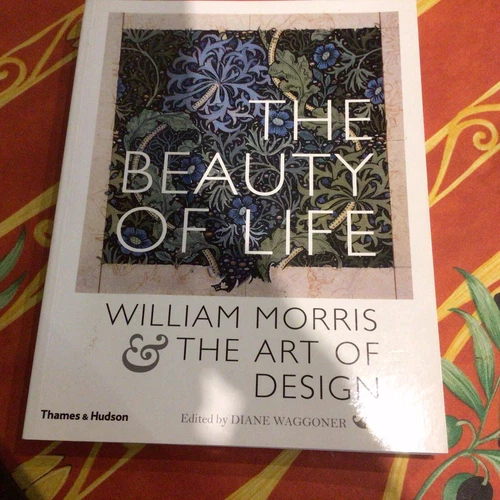
'William Morris was a man of tremendous energies, his accomplishments astonishing in their range and depth. He became successively a poet, embroiderer, pattern designer, calligrapher, dyer, weaver, translator, architectural preservationist, socialist, and book publisher and printer. As the head of the internationally successful Morris & Company, he devoted himself to the decorative arts. His influence was wide and long-lasting, on both sides of the Atlantic.
In this book William Morris the man, and ‘The Firm’, are considered by Pat Kirkham, of the Bard Graduate Center for Studies in the Decorative Arts, Design, and Culture in New York. British design after Morris is surveyed by Gillian Naylor, an established authority on nineteenth- and twentieth-century design and Edward R. Bosley, Director of the Gamble House in Pasadena, California, looks at Morris and American Arts and Crafts. These essays frame detailed studies by Diane Waggoner of Morris’s stained glass, interior decoration designs and book publishing ventures, and of his successor at Morris & Company, J. H. Dearle.
The Beauty of Life draws upon the rich holdings of The Huntington Library, Art Collections and Botanical Gardens in San Marino, California, which with the recent acquisition of a major William Morris collection, including fine printed books and the archive of Morris & Company, has become one of the outstanding centres for Morris study in the world.'
Buy the book HERE
- Details
- Written by: Kamran Mofid
- Hits: 9525
First posted on 12 June 2015. Updated on 10 March 2025.
N.B. Ten years ago, on 12 June 2015, I had written an Open Letter to the Bank of England governor, Mr. Mark Carney. A couple of days earlier, he had given a speech at the Mansion House in London. The speech had greatly resonated with me, a banker, speaking about values-led capitalism and the need to take action in the interest of the people and the common good.
His words and sentiments ring as true today as they did in 2015. This is why I wish to share it again with you.
But, before all that, time is now to celebrate the new prime minister of Canada:
Mark Carney, the eighth governor of the Bank of Canada from 2008 to 2013 and the 120th governor of the Bank of England from 2013 to 2020 to become Canada's next PM after a landslide Liberal leadership victory.
Mark Carney is introduced during the Liberal Party of Canada's leadership announcement in Ottawa, Ontario on March 9, 2025. “America is not Canada. And Canada never, ever, will be part of America in any way, shape or form,” Carney told supporters.-Photo Credit: Justin Tang/The Canadian Press/AP
- Details
- Written by: Kamran Mofid
- Hits: 648
Travel as Therapy in these Challenging Times
California dreaming...Big Sur's coastline
Big Sur...Where Heaven and Earth Meet
Big Sur...Where Sea and Mountains Kiss
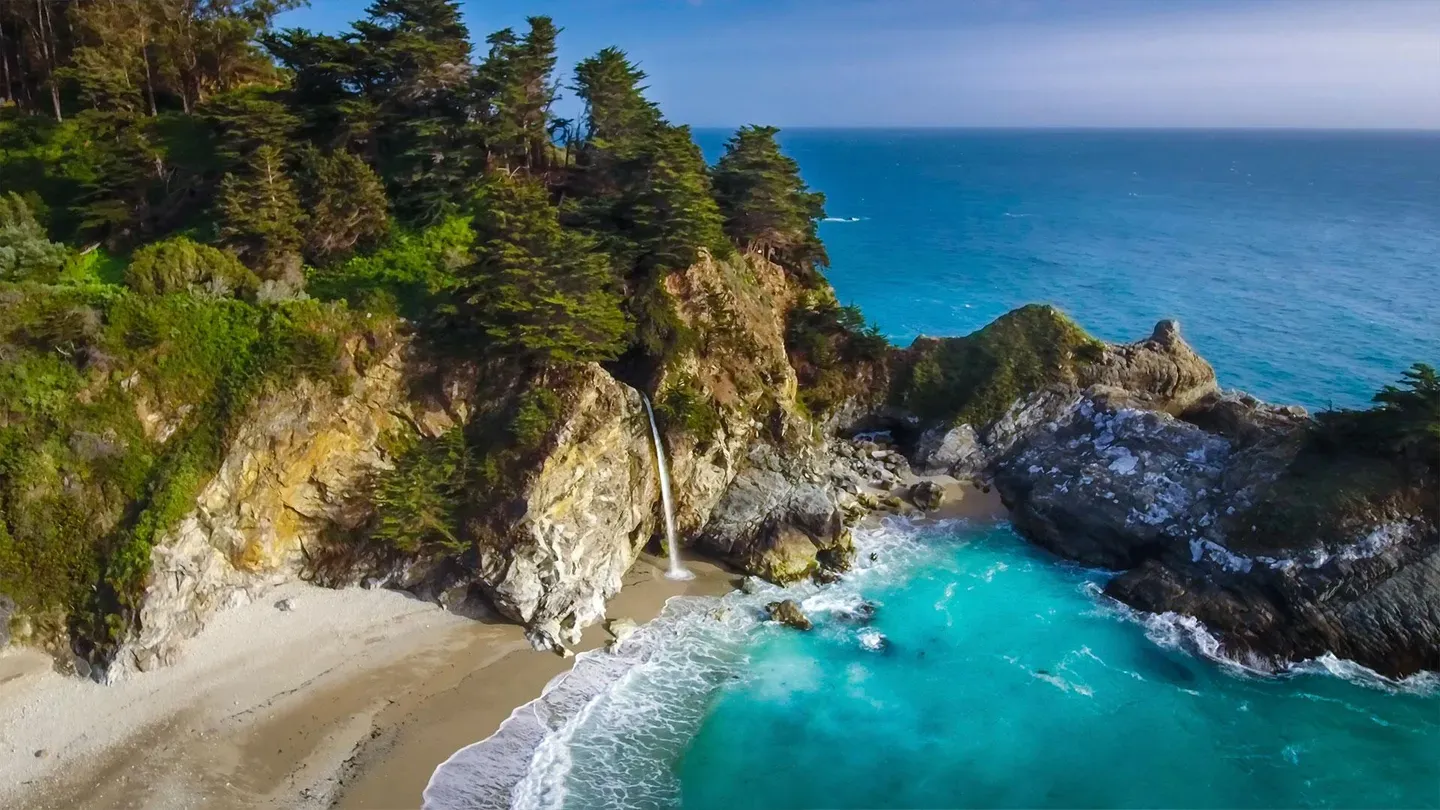
Photo credit: Sean Diediker via PBS
"Paradise or no paradise, I have the very definite impression that the people of this vicinity are striving to live up to the grandeur and nobility which is such an integral part of the setting. They behave as if it were a privilege to live here, as if it were by an act of grace they found themselves here. The place itself is so overwhelmingly bigger, greater, than anyone could hope to make it that it engenders a humility and reverence not frequently met with in Americans. There is nothing to improve on in the surroundings, the tendency is to set about improving oneself."-Henry Miller
Not long ago, a few years back, I wrote a Blog on The Healing Power of Travel and Wanderlust. Today, reading through the pages of my Sunday Paper, I felt sad and confused, so much news coverage on all the horrible things going on in the world.
